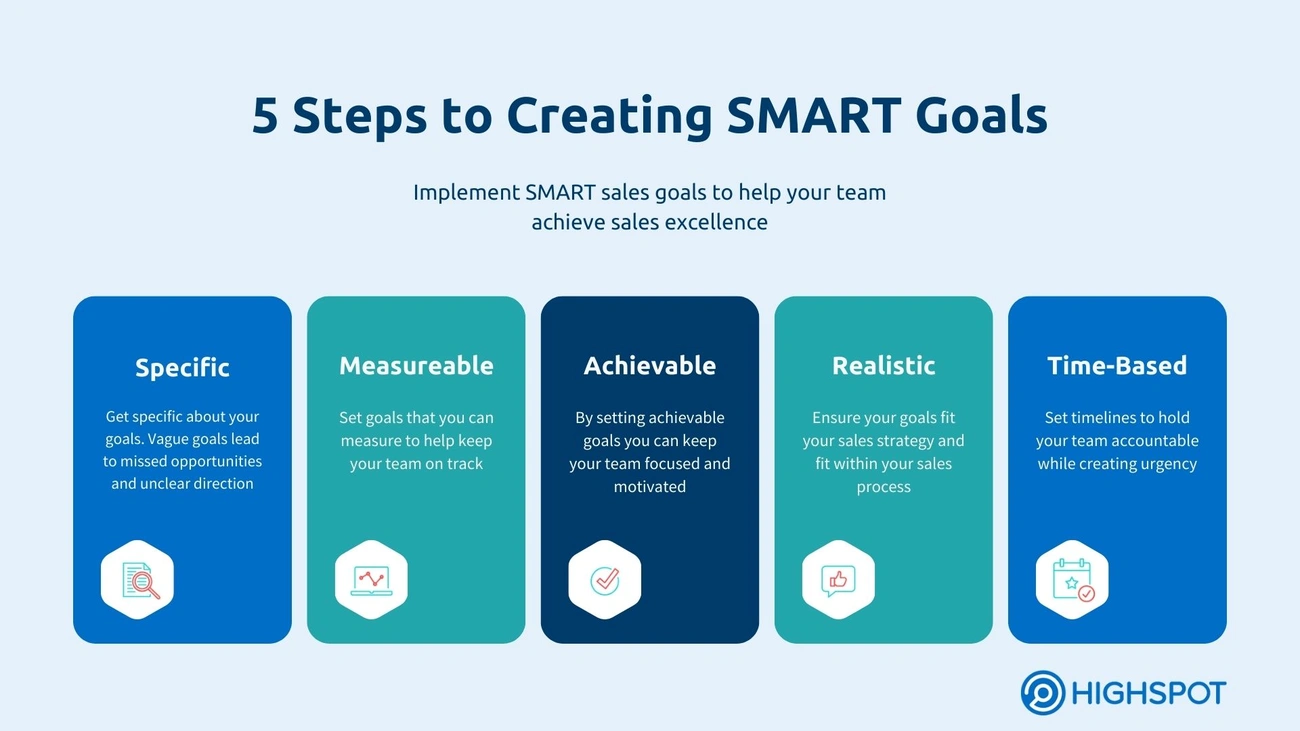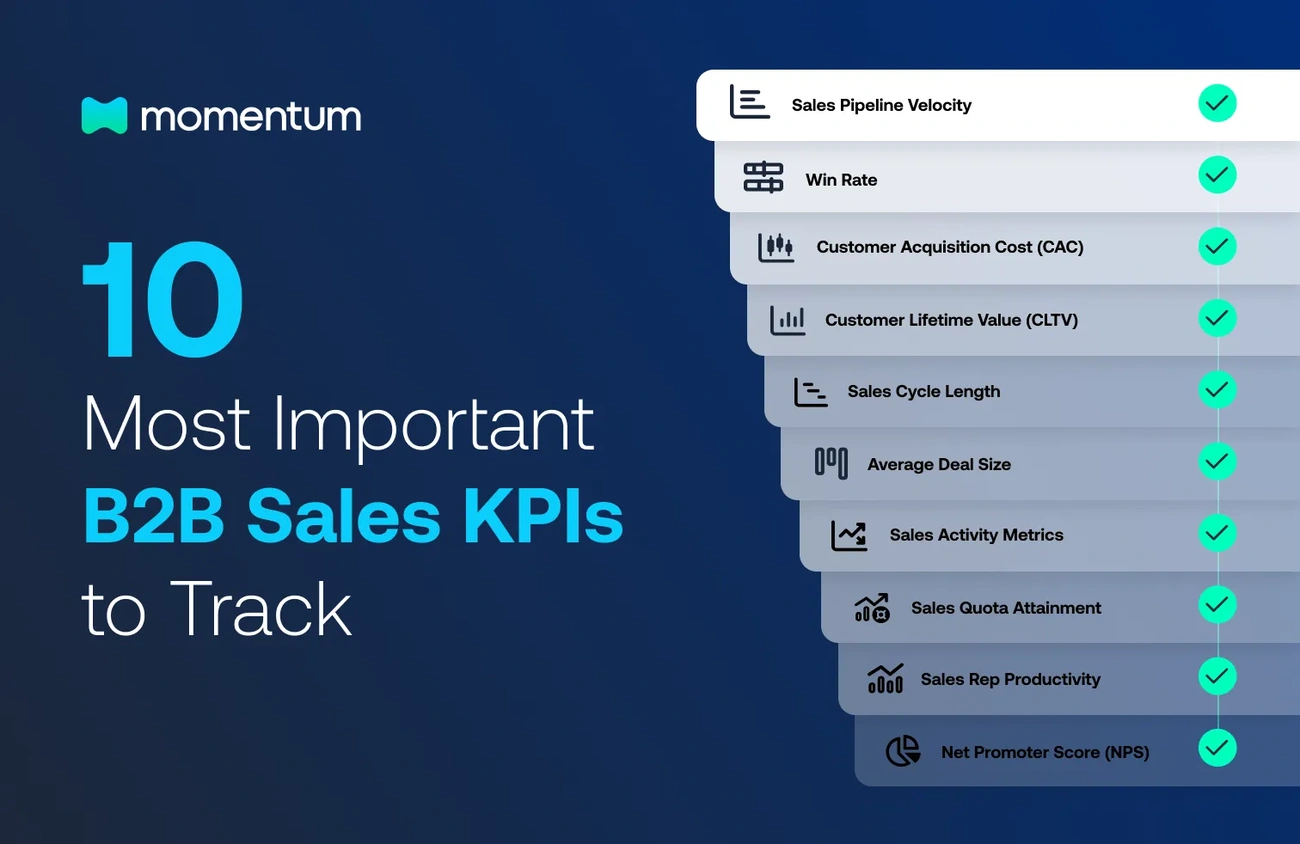Most sales representatives lose approximately 20% of potential deals simply by failing to follow up at the right time or with the right message. This staggering figure represents millions in lost revenue across sales organizations worldwide.
Automated sales reminders have emerged as the essential solution for modern sales teams overwhelmed by follow-up tasks and missed opportunities. The statistics paint a clear picture of the challenge: 80% of successful deals require at least five follow-up attempts, yet 44% of salespeople abandon prospects after just one rejection.
Sales professionals juggling multiple prospects often find their sales notebooks filled with incomplete information. Customer follow-up systems remain underutilized due to time constraints and competing priorities. Recent sales follow-up stats reveal that implementing AI note-taking for sales increases response rates by up to 30% through more personalized and timely communications.
The gap between understanding and execution remains significant. Sales teams recognize the importance of consistent follow-ups but struggle with the practical implementation of effective automated sales systems. They encounter challenges, including inconsistent processes, poor note quality, and difficulty balancing personalization with efficiency. Valuable opportunities slip through the cracks, affecting both revenue and customer relationships.
This guide explores how modern tools address sales follow-ups, moving from manual processes to streamlined, automated workflows. Whether you're an SDR making initial contacts, an AE working to close deals, or a CSM maintaining customer relationships, you'll discover practical strategies for implementing automated reminders that ensure no necessary follow-up falls through the cracks.
Challenges in Manual Sales Follow-Ups and Note-Taking
Sales teams relying on manual processes face overwhelming volumes of follow-up tasks that create significant barriers to success. These challenges ultimately impact revenue generation across multiple dimensions of the sales workflow.
Time Management Nightmares
Manual follow-ups consume approximately 21% of a sales representative's productive time. Sales professionals often face a dilemma: preparing for new meetings or properly following up on existing prospects. Recent sales follow-up statistics reveal that reps spend an average of 33 minutes trying to locate information they've previously recorded. This time could generate revenue through actual prospect engagement.
Inconsistent Documentation Practices
The typical sales notebook contains scattered information across handwritten notes, digital documents, email threads, and CRM entries. This fragmentation creates critical problems that compound over time.
Information gets siloed within individual representatives' notes, making knowledge transfer nearly impossible. Important context disappears when team members change roles or leave the organization. Follow-up quality varies dramatically between team members, creating inconsistent customer experiences. Key action items often get overlooked during busy periods.
Memory Limitations and Human Error
Even the most attentive sales professional cannot perfectly recall every detail from multiple customer conversations. Research shows that people forget approximately 50% of information within one hour of hearing it, and up to 70% by the next day, without proper documentation. For sales teams managing dozens of prospects simultaneously, this memory challenge creates significant business liability.
Quality vs. Quantity Dilemma
Sales representatives face a perpetual struggle between detailed documentation and meeting quotas. Thorough notes require time and attention. Quotas demand rapid engagement with new prospects. Without proper customer follow-up systems, this balancing act becomes increasingly complex, particularly during high-volume periods.
Personalization at Scale
Modern buyers expect personalized interactions, with 72% only engaging with customized messaging. Manual processes make delivering this level of personalization across hundreds of prospects nearly impossible. Creating a unique sales message example for each prospect requires mining previous conversation data—a time-intensive task when done manually.
Analytics and Improvement Limitations
Sales teams struggle to identify patterns, measure effectiveness, and implement continuous improvement without structured data capture. Manual note-taking creates inconsistent data that cannot be easily analyzed. Understanding which follow-up strategies work becomes difficult without standardized information.
The Collaboration Gap
Sales success often depends on smooth handoffs between SDRs, AEs, and other team members. Manual notes create communication barriers that directly impact deal progression. 67% of sales professionals report losing deals due to poor internal information sharing about prospect needs.
Follow-Up Timing Challenges
Identifying the optimal moment for follow-up remains challenging without systematic reminders. Studies show that contacting prospects within 5 minutes of initial engagement increases conversion rates by 900%. Most manual systems cannot consistently achieve this timing precision.
These challenges explain why forward-thinking sales organizations increasingly turn to AI note-taking for sales and implement automated sales systems to overcome manual process limitations.
How Sales Reps Use Demodesk AI Assistant in Daily Workflows
Demodesk's AI Assistant addresses the entire sales cycle through workflow automation that integrates seamlessly into existing processes. Rather than forcing representatives to adapt to new systems, this automated sales system works within established routines.
Meeting Preparation
Sales representatives utilize Demodesk's AI Assistant to review crucial prospect information before customer calls. The system automatically collects and organizes data from previous interactions, providing comprehensive context that includes past conversation summaries, key points from earlier meetings, and outstanding questions requiring attention.
The AI Assistant generates personalized talk tracks and agenda suggestions based on the prospect's industry, role, and previously expressed pain points. This capability transforms a standard sales notebook into an intelligent preparation tool that anticipates conversation needs and potential discussion points.
Real-Time Assistance During Calls
The AI Assistant works discreetly in the background throughout live conversations, analyzing discussions without disrupting natural conversation flow. The system identifies sales opportunities, objections, and customer requirements as they emerge. When representatives encounter unexpected questions, the AI instantly retrieves product specifications or technical details that might otherwise be forgotten.
The platform suggests relevant case studies, pricing information, or competitive differentiators precisely when needed. This real-time support proves particularly valuable during complex technical discussions or when prospects raise unforeseen concerns.
Post-Meeting Follow-Up
Following call completion, the AI Assistant automatically captures comprehensive meeting notes, eliminating manual documentation requirements. The system identifies action items, next steps, and optimal timing for follow-ups—creating personalized automated sales reminders that ensure consistent engagement.
The platform drafts personalized follow-up emails containing meeting summaries with key discussion points, specific action items with assigned owners and deadlines, relevant resources mentioned during conversations, and personalized next steps based on expressed prospect needs.
Coaching & Continuous Improvement
Sales managers utilize Demodesk's AI Assistant to identify coaching opportunities across their teams. The system analyzes conversation patterns, question handling, and objection responses to highlight improvement areas. This creates an objective assessment of performance metrics, including talk-to-listen ratios, question quality, and competitive mention handling.
The data-driven approach converts subjective feedback into actionable insights, helping representatives develop specific skills rather than receiving general advice. Managers can identify which techniques consistently produce positive outcomes and which areas require additional attention.
Searching Past Conversations
Representatives can search across all historical customer interactions using Demodesk's AI capabilities. Unlike traditional customer follow-up systems that store only introductory notes, the platform enables querying specific topics, objections, or requests across entire conversation histories.
A rep can quickly search "pricing objections from enterprise customers" to review successful handling of similar situations. This searchable knowledge base creates a living library of sales message examples and proven approaches that become more valuable over time.
The AI note-taking for sales capabilities eliminates administrative work, allowing representatives to reinvest time into building customer relationships and closing deals.
Tools & Workflows for Automating Sales Follow-Ups and Note-Taking
Sales technology has evolved to address the specific pain points that manual processes create. These solutions target the consistency, personalization, and time management challenges that sales teams face daily.
AI-Powered Meeting Assistants
Modern automated sales systems include AI assistants that join calls virtually, capturing conversations without human intervention. These tools analyze verbal cues, identify action items, and extract key discussion points to create structured notes. Top solutions like Demodesk, Gong, and Chorus offer real-time transcription that allows representatives to focus entirely on conversation quality rather than taking notes.
Sales professionals report saving 5-7 hours weekly on administrative tasks when using these tools. This time translates directly into additional prospect engagement opportunities.
CRM Integrations
The effectiveness of any customer follow-up system depends on its ability to communicate with the existing sales infrastructure. The most valuable tools offer bidirectional CRM integrations that automatically:
- Sync meeting notes and action items directly to customer records
- Update opportunity stages based on conversation analysis
- Create tasks and follow-up reminders without manual entry
- Enrich contact profiles with insights from conversations
These integrations eliminate the administrative burden of transferring information between systems. Sales follow-up stats remain accurate and accessible within the team's primary workflow environment.
Scorecards and Coaching Frameworks
Advanced tools incorporate evaluation frameworks that assess conversation quality against established best practices. These scorecards measure question-to-statement ratios, objection handling, and adherence to sales methodologies. Teams implementing these frameworks report 23% higher win rates through consistent skill development and process adherence.
The most effective systems automatically flag coaching opportunities and highlight successful sales message examples for team-wide learning.
Automated Follow-Up Emails
The follow-up process itself has become increasingly automated. Sophisticated systems generate personalized email drafts based on meeting content, analyzing conversation context, buyer stage, and historical engagement patterns to suggest appropriate messaging and timing.
Representatives can review, edit, and schedule these communications within seconds rather than spending 15-20 minutes crafting each response. These systems maintain personalization by incorporating specific discussion points from actual conversations, avoiding the generic feel of traditional templates.
Multi-Meeting Insights and Reporting
Tools now provide longitudinal analysis across multiple customer touchpoints. This capability moves beyond the traditional sales notebook approach to create a dynamic knowledge repository that reveals patterns invisible at the individual meeting level.
Sales leaders can identify which topics consistently lead to deal advancement, which objections signal potential deal risks, and which representatives excel in specific conversation scenarios. AI note-taking for sales creates standardized data that feeds predictive algorithms, helping teams forecast outcomes with increasing accuracy.
The right combination of these tools creates workflows where administrative burdens decrease while follow-up quality and consistency improve significantly.
Role-Specific Use Cases for SDRs, AEs, and CSMs
Each sales role encounters distinct automation requirements that reflect their unique responsibilities within the revenue cycle. The approach to automated sales reminders varies significantly based on whether professionals focus on initial outreach, deal progression, or customer retention.
SDRs (Sales Development Representatives)
Sales Development Representatives operate within a high-volume environment where efficiency determines success. Their primary challenge centers on maintaining personalized outreach while managing hundreds of prospects simultaneously.
Automated sales systems address this challenge by reducing administrative work by approximately 62% for SDRs. The technology handles repetitive tasks while allowing representatives to concentrate on meaningful prospect conversations.
Key automation features that drive SDR success include innovative follow-up sequencing that adjusts timing based on prospect engagement metrics. Personalized outreach templates incorporate prospect-specific data points from LinkedIn and other sources. Meeting scheduling automation eliminates the typical back-and-forth required to confirm appointments.
SDRs utilizing AI-powered systems report 37% higher meeting booking rates compared to manual processes. This improvement stems from consistent follow-through and optimal timing—two areas where manual processes typically fail when managing large prospect volumes.
AEs (Account Executives)
Account Executives navigate complex sales cycles while managing multiple opportunities at various stages. Their automation needs focus on relationship nurturing and deal progression rather than initial outreach volume.
Customer follow-up systems for AEs create sophisticated sales notebooks that capture every interaction detail. These digital repositories preserve crucial information including budget constraints, technical requirements, and stakeholder concerns across extended sales cycles. AEs benefit from automated reminders that prompt appropriate follow-up actions based on deal stage and previous conversation context.
AEs utilize automation to draft personalized proposals incorporating specific discussion points from past meetings. This capability produces documents that address stated customer needs rather than generic templates. AEs using automated systems report 41% faster deal progression and 28% higher close rates compared to manual processes.
CSMs (Customer Success Managers)
Customer Success Managers focus on maintaining relationships with existing customers and identifying expansion opportunities. Their automation requirements differ markedly from acquisition-focused roles.
AI note-taking for sales creates comprehensive customer health profiles by analyzing conversation sentiment, feature usage discussions, and expressed pain points. These insights enable proactive interventions before issues escalate into churn risks. Automated systems help CSMs track customer goals and success metrics across multiple stakeholders, ensuring alignment between promised outcomes and delivered results.
Sales follow-up stats for CSMs demonstrate powerful results:
- 43% increase in on-time renewals
- 31% higher expansion revenue
- 26% reduction in escalated support issues
CSMs utilize automation to transform customer data into actionable insights that strengthen relationships and drive account growth. Their sales message examples focus on value reinforcement rather than initial value proposition—a distinction that automation helps maintain consistently.
Sales professionals who embrace role-appropriate automation consistently outperform peers relying on manual processes. Success requires selecting tools that address specific role challenges while preserving the human connection that drives sales effectiveness.
Competitor Comparison: Why Demodesk Stands Out
Top Tools & Competitors for Automated Follow-Ups
Several notable players dominate the automated sales system marketplace alongside Demodesk:
- Gong.io: Focuses on conversation intelligence and sales coaching
- Chorus.ai: Specializes in conversation analysis and deal intelligence
- Outreach: Emphasizes multi-channel sequence automation
- SalesLoft: Centers on sales engagement and cadence management
- HubSpot: Offers integrated CRM with basic follow-up capabilities
- Actionable Insights:
- Each platform addresses specific aspects of the sales workflow. Many organizations find themselves using multiple disconnected tools to achieve comprehensive follow-up automation. This fragmentation often creates unnecessary complexity within customer follow-up systems.
How These Integrations Work
Integration capabilities vary significantly across platforms. Most competitors offer standard API connections that require technical setup and maintenance.
Gong and Chorus primarily integrate at the conversation level, capturing call data but often requiring separate tools for actual follow-up automation. Sales teams must manually transfer insights between systems or invest in custom integration development.
Outbound-focused tools like Outreach and SalesLoft excel at email sequence automation yet struggle with comprehensive meeting documentation. Their integration models typically center on pushing data to CRM systems rather than creating a unified workflow experience.
Demodesk takes a different approach through native integrations that connect directly to existing workflows. Its system automatically synchronizes information across the entire sales tech stack without requiring complex configuration or maintenance. This reduces both technical overhead and user friction.
Why Demodesk is Better
Demodesk distinguishes itself through several fundamental advantages over competitors:
Complete Workflow Coverage: Unlike competitors that excel in either pre-meeting or post-meeting phases, Demodesk addresses the entire meeting lifecycle from preparation through follow-up.
Purpose-Built Meeting Intelligence: The platform was designed specifically for sales conversations rather than adapted from general meeting solutions, resulting in more accurate sales follow-up stats and actionable insights.
Seamless User Experience: Sales representatives interact with a single interface rather than toggling between multiple applications, dramatically reducing the learning curve and increasing adoption rates.
Advanced Personalization: Demodesk's AI analyzes conversation context to generate highly customized follow-up materials, including tailored sales message examples based on actual prospect language.
Superior Data Hygiene: The system maintains comprehensive sales notebooks that automatically organize information by customer, topic, and action item without manual tagging or categorization.
Role-Specific Value
Demodesk delivers targeted benefits for different sales functions:
For SDRs, the platform provides intelligent qualification frameworks that adapt to prospect responses, helping identify high-potential opportunities more efficiently than generic follow-up systems.
Account Executives benefit from Demodesk's deal intelligence capabilities, which analyze conversation patterns to highlight risk factors and suggest appropriate follow-up strategies for specific buying scenarios.
Customer Success Managers use the platform's relationship intelligence to identify expansion opportunities and potential churn risks through AI note-taking for sales that captures subtle sentiment indicators.
While competitors offer valuable capabilities in specific areas, Demodesk's comprehensive approach to meeting automation creates a unified experience that addresses the entire sales workflow without the fragmentation that characterizes alternative solutions.
How Demodesk AI Assistant Enhances Sales Automation
Demodesk's AI Assistant extends sales automation capabilities far beyond basic reminder functionality. The platform addresses the complete sales workflow through integrated features that connect initial contact with ongoing relationship management.
Seamless Note-Taking and Summarization
Conversation details receive automatic capture through the AI Assistant's precision-focused system. Context preservation drives the technology's core functionality, distinguishing critical business requirements from casual exchanges. Representatives managing multiple concurrent prospects benefit from this intelligent sales notebook approach, which ensures essential details never disappear between interactions.
The system identifies key discussion points without requiring manual intervention. This automated documentation streamlines note-taking, maintaining comprehensive conversation records.
Automated, Personalized Follow-Ups
Contextually relevant automated sales reminders emerge directly from actual conversation content. Follow-up messages incorporate specific prospect pain points, objections, and requirements discussed during calls. Each sales message example reflects individual prospect needs rather than generic template approaches, creating authentic personalization at scale.
The system generates these communications based on real dialogue analysis, ensuring relevance and timeliness that manual processes cannot consistently achieve.
AI-Driven Coaching and Scorecards
Conversation pattern analysis reveals coaching opportunities through continuous platform monitoring. Managers receive objective performance data covering talk-time ratios, question quality, and objection handling effectiveness. Data-driven coaching replaces subjective feedback, establishing consistent improvement frameworks across teams.
These analytical insights transform coaching from opinion-based guidance into measurable skill development opportunities.
Multi-Meeting Insights and Reporting
Connected information spans multiple conversations with identical prospects or accounts. Longitudinal perspectives reveal buying signals, sentiment shifts, and engagement patterns invisible during individual meetings. Complex sales cycles benefit from these connected insights, which provide valuable sales follow-up stats for strategic decision-making.
The system builds comprehensive prospect profiles across touchpoints, creating deeper understanding than single-interaction analysis can provide.
Workflow and Integration Flexibility
Existing CRM platforms, calendar applications, and communication tools connect seamlessly with the automated sales system. Bidirectional integrations pull relevant context into meetings while pushing outcomes back to appropriate systems. Manual data transfer between platforms becomes unnecessary, eliminating administrative overhead.
These connections maintain workflow continuity without requiring representatives to manage multiple disconnected systems.
Enhanced Collaboration and Knowledge Sharing
Individual sales knowledge becomes institutional intelligence through searchable conversation archives. Teams quickly identify successful approaches from colleagues to similar objections or requirements. This collaborative AI note-taking for sales ensures winning strategies are spread throughout organizations, creating consistent customer follow-up systems across all representatives.
Searchable archives develop into living knowledge repositories that improve over time through accumulated successful interactions.
Key Takeaways & Actionable Recommendations

Strategic planning and careful execution determine the success of automated sales reminders implementation. Data from top-performing sales organizations reveals essential steps for maximizing follow-up automation effectiveness.
Organizations that map their current follow-up workflows before implementing new systems achieve 52% higher adoption rates. Document existing processes first. Identify gaps, pain points, and successful approaches worth preserving in your automated sales system.
Focus initially on a single use case rather than attempting full automation immediately. Teams concentrating on post-meeting summaries or follow-up emails report 67% faster time-to-value compared to those pursuing broad automation from the start.
Establish clear success metrics early. Effective indicators include reduction in administrative time (target 5+ hours saved weekly), increased follow-up consistency (aim for 95%+ follow-through rate), improved response rates (benchmark: 30%+ increase), and accelerated sales cycles (typical goal: 20-30% reduction).
Sales organizations dedicating at least three hours to initial training see 78% higher utilization rates of customer follow-up systems. Proper training investment matters significantly for adoption success.
The most effective sales message examples contain 60-70% standardized content and 30-40% personalized elements based on actual conversation data. Customize templates thoughtfully to maintain authenticity while achieving scale.
Role-specific playbooks addressing the unique challenges of SDRs, AEs, and CSMs generate 43% higher satisfaction among sales team members. Organizations with tailored automation workflows consistently outperform those using generic approaches.
Systems connecting with existing CRM, calendar, and communication platforms deliver 3.2x greater ROI than standalone solutions. Integration capabilities significantly impact overall effectiveness.
Start with tech-savvy team members as internal champions. These early adopters help refine workflows and demonstrate value before company-wide rollout, creating smoother organization-wide adoption.
Teams conducting monthly review sessions of their automation effectiveness experience 39% better long-term results. Regular refinement based on sales follow-up stats and user feedback prevents the "set and forget" trap that limits system value.
Establish a centralized repository for successful sales notebook techniques and automation workflows. This collaborative approach typically yields a 28% improvement in team-wide performance through shared learning and best practices.
Focus initially on well-defined processes, expand automation scope gradually, measure results consistently, and refine your approach continuously to maximize AI note-taking for sales benefits.
ROI Benchmarks of Automating Sales Note-Taking

The financial impact of automated sales reminders demonstrates measurable returns across multiple business dimensions. Organizations implementing advanced note-taking automation consistently report substantial performance improvements that directly affect their bottom line.
Sales teams using AI note-taking for sales experience a 37% reduction in administrative work, equivalent to recovering nearly 15 hours per representative monthly. This reclaimed productivity translates to approximately 12 additional prospect conversations weekly per sales representative.
Companies utilizing automated sales systems report significant revenue improvements:
- 23% faster sales cycles through improved follow-up consistency
- 27% increase in deal win rates attributed to better conversation intelligence
- 31% growth in average deal size resulting from more personalized engagement
Organizations incorporating sophisticated customer follow-up systems experience a 41% improvement in lead-to-opportunity conversion rates. This enhancement stems from the ability to provide timely, contextually relevant responses that resonate with prospects needs.
Full ROI typically occurs within 3-6 months of implementation. Initial investment costs generally range between $10,000 and $50,000, depending on team size and integration complexity, yet the average first-year return exceeds 300% of implementation costs.
The productivity impact extends throughout the sales hierarchy. Sales managers spend approximately 60% less time reviewing call recordings and sales notebooks when automated systems generate consistent, searchable documentation. This efficiency allows leadership to focus on strategic coaching rather than administrative oversight.
Representatives using automation tools experience 34% lower burnout rates compared to peers relying on manual processes. This reduction in turnover represents significant cost savings, considering the typical $115,000 expense associated with replacing and training each departed sales representative.
Sales follow-up stats show that automation delivers both immediate efficiency gains and substantial long-term financial returns across multiple dimensions of sales performance. These benchmarks provide compelling evidence for organizations seeking to optimize their sales message example delivery and overall follow-up effectiveness.
Conclusion
Automated sales reminders represent a fundamental shift in how sales teams approach follow-up management. The transformation from manual processes to intelligent automation addresses the core challenge that has plagued sales organizations: losing valuable opportunities due to inconsistent follow-through.
The data tells a compelling story. Organizations that embrace AI-powered follow-up systems recover substantial productivity while achieving superior results across key performance metrics. This improvement stems not from replacing human judgment but from eliminating the administrative friction that prevents sales professionals from focusing on relationship building and problem solving.
Platforms that address the complete sales workflow—rather than fragmented solutions—create the most significant impact. Teams benefit from unified experiences that connect preparation, conversation, and follow-up within a single intelligent system. This comprehensive approach eliminates the complexity of managing multiple disconnected tools while ensuring consistent execution across all customer interactions.
Implementation success depends on strategic thinking rather than technological sophistication. Sales organizations achieve optimal results through careful process documentation, focused initial deployment, measurable objectives, and thorough team preparation. Progressive expansion of automation capabilities ensures sustainable adoption and continuous value creation.
The competitive advantage belongs to sales teams that master the balance between technological efficiency and authentic human connection. Automated systems handle routine tasks and data analysis, freeing representatives to engage in the strategic thinking and relationship building that ultimately drive revenue growth.
Sales professionals who embrace these tools position themselves to thrive in an increasingly competitive marketplace. They deliver more personalized experiences, respond more quickly to opportunities, and maintain better relationships with prospects and customers. This combination of efficiency and effectiveness creates a sustainable foundation for long-term sales success.




.png)
.png)
.png)





